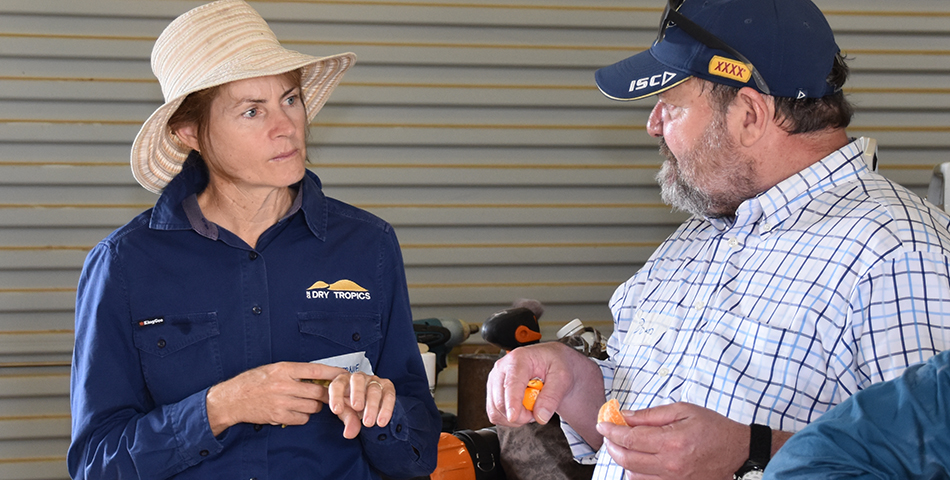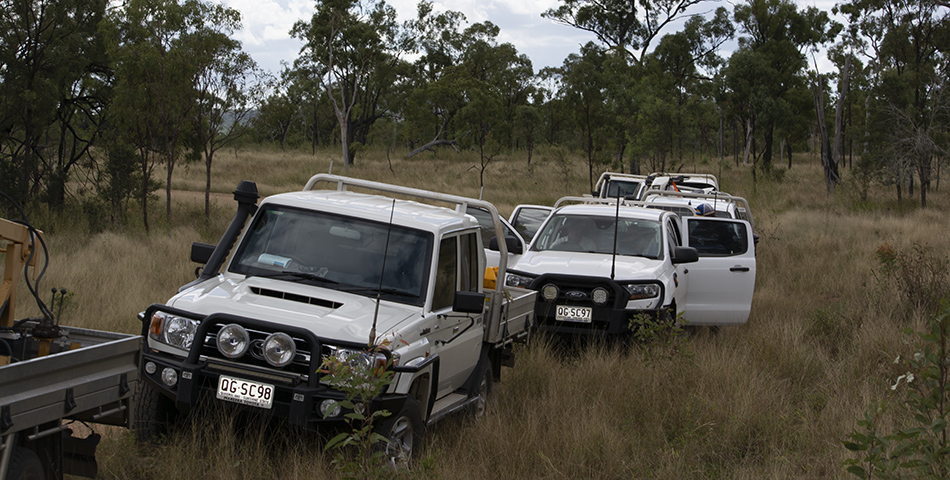Extension staff train to stay current in Paddock to Reef reporting
Grazing extension staff have undertaken training to ensure meaningful services are being offered to graziers in the Burdekin region.
NQ Dry Tropics has adopted a continuous training program to help employees keep up to date about new and emerging technologies in the agriculture industry, and to hone their knowledge and skills.
NQ Dry Tropics Grazing Team Leader Josh Nicholls said the organisation’s grazing projects, aimed at improving land condition, productivity and water quality, reported to the Paddock to Reef Integrated Monitoring, Modelling and Reporting (P2R) program.
“The program provides the framework for evaluating and reporting progress towards the State and federal government’s Reef 2050 Water Quality Improvement Plan targets for reducing water pollution at the catchment, regional and whole-of-reef scale,” Mr Nicholls said.
“NQ Dry Tropics works directly with graziers to trial and validate farm management practices, and the primary means of demonstrating the success of those practices is through the Paddock to Reef program.
“That’s why it’s important to hold regular Paddock to Reef training sessions for extension staff.
“The aim is to equip staff with strategies to present Paddock to Reef data clearly to graziers so they can see the positive impact their management practice changes are having on the environment as well as their business.”
At a recent two-day extension convention a Paddock to Reef session was held to explain how information collected is used in the annual Reef Water Quality Protection Plan report card. Staff also heard how five-year reviews results in model scenarios being changed to represent real world conditions.
Staff also heard about the importance of collecting human dimension information to help understand landholders motivations and perceived barriers to adopt particular management practices.
Grazing Field Officer Ashleigh Kilgannon said the P2R session was very helpful.
“It was good to hear they have taken onboard feedback that should lead to a more streamlined and effective tool for collecting information from graziers,” she said.
“And, on the other hand, I picked up a few ideas about how essential information that seems fairly inconsequential to the landholder can help when it’s aggregated across a catchment of a broader area.
“That will help me explain the importance of monitoring and evaluation, because it links the on-ground improvements graziers are making and converts them into water quality improvements that can then be reported.”
That flow of information means progress towards water quality targets can be properly tracked and reported back to landholders.
It also means government can use the data to fine-tune investment and resources to achieve maximum returns for graziers and the environment.
Paddock to Reef Officer Jade Fraser said getting the story behind the data was just as important as the data itself.
“The human dimension story helps decision-makers, often far removed from the paddock, to understand the challenges, attitudes and motivations of land managers in making practice changes on-property,” he said.
“This generates the ability to tell positive stories about successful practice change that has brought about great returns for landholders and the environment in which they operate.”
Angela Anderson from Spyglass Station and the Department of Agriculture and Fisheries (left) with Billy Thomson from NRM Regions Queensland who was one of the P2R presenters at the convention.
NQ Dry Tropics’ Soil Conservation Officer Bernie Claussen chats with Office of the Great Barrier Reef representative Dominic Henderson who was one of the P2R presenters on the second day of the convention.
Not your average traffic jam… it takes a lot of 4WD utes to move 40 people around a cattle station.
ALSO IN THIS ISSUE:



